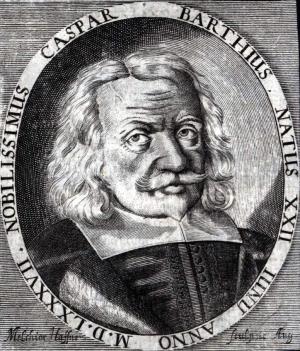Victor Vigilius
By Samuel Huskey | November 30, 2015

I recently ran across this in Giarratano's apparatus criticus for his edition of Calpurnius Siculus' Bucolica :
ambas] amba Victor Vigilius

Giarratano offers no more information about this mysterious Victor Vigilius, which only heightened my curiosity. My first stop was VIAF, the Virtual International Authority File, since it hasn't failed me yet. After I started entering Vigilius' name into the search bar, VIAF's autocomplete feature filled in "Victor Vigilius, C., 1587-1658, Pseudonym." I clicked the search button and found that C. Victor Vigilius is a pseudonym for Kaspar von Barth, so I went to Barth's edition of the Venatici et Bucolici Poetae Latini and found the note.
In short, Barth prints ambas in his text, but he allows his friend and alter ego (his phrase) "Victor Vigilius" to suggest amba —and then he respectfully disagrees with him!
This is in keeping with Sandys' description of Barth as "characterised by an extraordinary degree of vanity, combined with a disregard for veracity."
Barth did make some important contributions to philology, among them his monumental Adversariorum commentariorum libri LX , which includes many and various observations about pretty much everything from antiquity. It's available on Google Books, but it is also available in a much more useful format through CAMENA: Corpus Automatum Multiplex Electorum Neolatinitatis Auctorum—a useful resource for anyone interested in Neolatin.
But let me return to the original point. One of the problems with critical editions is that they often put the onus on the reader to track down cryptic references. With a digital critical edition, we could preserve the attribution to Victor Vigilius, and we could also use a VIAF permalink to make his connection with Kaspar von Barth explicit. And, since Barth's edition could also have a link from the edition's bibliography to a virtual copy, it would be possible for the reader to track down the reference quickly.
Giarratano removed this reference from his later editions, so it may be that I'm the only one who would go to this trouble in the first place. Even so, this is a good example of how the best practices of Linked Open Data can be leveraged to make critical editions easier to use.